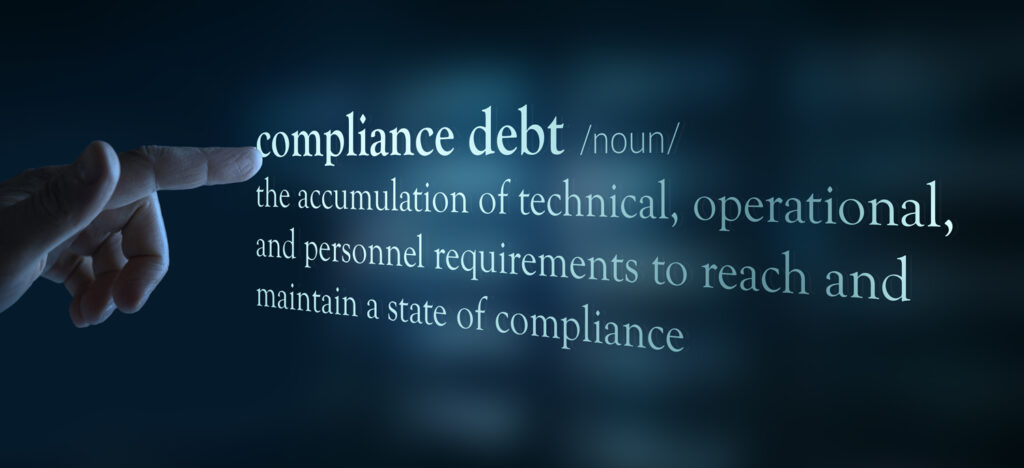
Key Insights at a glance: Understanding TPRM is essential for managing third-party risks effectively
- Why you need a strict TPRM process – if your vendor can’t demonstrate their security posture for protecting PHI, do not work with them.
- Cyber defense is about MDR – Today, a good offense is better than a good defense.
- Don’t leave your security to chance – it’s not worth risking patient safety or your bottom line.
Third-party vendors—from cloud service providers to medical device manufacturers and IT consultants—are critical for operations but also introduce significant cybersecurity risks. Proper third-party risk management (TPRM) is no longer optional; it is a necessity to safeguard sensitive patient data, comply with regulations, and reduce potential security vulnerabilities.
This article explores the pressing importance of healthcare vendor risk management and outlines effective strategies to reduce these risks with actionable steps to strengthen your organization’s cybersecurity posture.
Third-Party Risk Management (TPRM)
Third-party risk management (TPRM) is a form of risk management that focuses on identifying and reducing risks relating to the use of third parties, often referred to as vendors, suppliers, partners, contractors, or service providers. Helathcare TPRM is vital for maintaining compliance with HIPAA regulations which mandate that healthcare organizations ensure their business associates and third-party vendors adhere to strict security and privacy standards in order to protect sensitive healthcare information.
TPRM helps identify, assess, and mitigate risks posed by third parties handling protected health information (PHI), ensuring they meet HIPAA requirements. By implementing TPRM, organizations can safeguard data, reduce vulnerabilities, and maintain trust with patients. Aligning TPRM with HIPAA not only protects sensitive information, but also helps avoid costly penalties and ensures regulatory compliance.
The Importance of Managing Third-Party Risks
Healthcare is one of the most targeted industries for cyberattacks, with third-party vulnerabilities serving as a prime entry point for breaches. Vendors often access sensitive healthcare systems and data, making them an attractive target for attackers. A recent report from IBM’s Cost of a Data Breach study revealed that healthcare breaches average $10.93 million in damages, the highest across all industries.
Additionally, regulatory bodies such as HIPAA require healthcare entities to ensure that their business associates comply with strict data protection rules. Failure to manage third-party risks effectively can lead to costly penalties, reputational harm, and risk patient safety.
Some common risks associated with third-party vendors in healthcare include:
- Data breaches caused by insufficient security measures on the vendor side.
- Operational disruptions due to vendor system failures or cyberattacks.
- Unauthorized access, where vendors inadvertently or maliciously misuse access credentials.
- Regulatory non-compliance, which can lead to financial penalties and legal repercussions.
To address these risks, healthcare organizations need to take a proactive and structured approach to TPRM.
Best practices for TPRM in healthcare
To protect your organization from third-party risks, it’s essential to combine technology, people, and processes into a robust TPRM framework. Below are actionable strategies to enhance your TPRM program.
1. Conduct Comprehensive Due Diligence
Before engaging with any vendor, conduct a thorough assessment of their security practices. When assessing a vendor’s security measures, start by evaluating their cybersecurity policies to ensure they align with your organization’s standards. It’s also essential to request certifications like SOC 2 or ISO 27001, which demonstrate their compliance with recognized security frameworks. Additionally, review their history of data breaches or cybersecurity incidents to gauge their ability to protect sensitive information. Taking these steps helps ensure the vendor you choose prioritizes security and reduces potential risks to your organization’s data and systems.
Ask for transparency in their risk management practices and inquire about how they manage their own third-party vendors, sometimes referred to as “fourth parties.” If I potential vendor cannot provide this information, do not partner with them.
2. Establish Clear Contracts and Security Agreements
Legal agreements should set clear expectations about vendor responsibilities related to cybersecurity. Contracts involving sensitive information often include critical cybersecurity clauses to ensure compliance with regulations like HIPAA and HITRUST. These agreements typically outline data protection requirements, such as the use of encryption and secure data storage practices, to safeguard sensitive information. Additionally, they emphasize the importance of incident response protocols, detailing clear communication procedures to follow in the event of a breach.
3. Implement Continuous Monitoring
Single pre-onboarding assessments are not enough to ensure vendor security over time. Ongoing monitoring is critical to identifying emerging risks. Consider using technologies that allow you to track vendor compliance in real time, ensuring potential issues are identified early. Continuous vulnerability scanning adds another layer of protection by detecting and responding to threats as they arise, keeping your systems secure. Additionally, leverage tools with detailed audit trails that provide a clear record of vendor activity, promoting transparency and accountability throughout your operations. For example, monitoring denied access attempts via VPC endpoints in cloud networks can highlight unauthorized activities, as demonstrated in industry examples.
4. Perform Regular Risk Assessments
Periodically conduct formalized risk assessments for all critical vendors. To ensure security and minimize vulnerabilities, vendors are ranked based on their access to sensitive data and systems. This process helps identify specific risks, such as unpatched software or unsecured remote server access, which could pose potential threats. Once these risks are pinpointed, tailored action plans are developed and implemented for each vendor to address and mitigate the issues effectively. By taking these steps, organizations can strengthen their security posture while maintaining better oversight of vendor-related risks and ensuring safer interactions with critical systems and data.
5. Educate and Empower Employees
It’s vital to educate your internal teams on the importance of managing third-party vendor risks. Train employees to recognize phishing attacks, safeguard sensitive data, and follow internal security procedures. Your staff plays a key role in reducing errors or oversights that could lead to security breaches involving third-party vendors.
6. Use Advanced Technology
Invest in cutting-edge cybersecurity tools to strengthen your defenses. Zero Trust architectures, which enforce strict access controls, are becoming a vital component of modern cybersecurity, ensuring that every access request is thoroughly verified. Alongside this, Endpoint Detection and Response (EDR) solutions play a key role in monitoring and mitigating suspicious activities on devices in real-time. Cloud Security Posture Management (CSPM) tools further enhance security by ensuring compliance and detecting misconfigurations in cloud environments. Additionally, AI-powered threat intelligence platforms are emerging as cutting-edge solutions, providing advanced insights to predict and prevent cyberattacks before they occur. Together, these technologies shape a robust defense strategy.
These technologies can help enforce security policies across your vendors while offering real-time insights into potential threats.
7. Create an Incident Response Plan
It’s no longer a matter of if but when a breach happens, so teams need to outline a detailed incident response plan that addresses third-party risks. Establishing clear responsibilities between your organization and the vendor is essential to maintaining security and accountability. Ensure that vendors are required to notify you immediately of any potential breaches or incidents, allowing for a prompt response. Additionally, outline specific steps to mitigate the impact of a breach quickly and effectively. By defining roles, setting clear communication expectations, and planning for rapid action, you can minimize risks and protect your organization in the event of a security incident.
Having a clear plan ensures rapid recovery with minimal disruption to patient care, aligning with healthcare TPRM best practices for effective risk management.
Managing TPRM in Healthcare
Managing third-party vendor risks in healthcare is no small task, but it is essential to protecting sensitive patient data, staying compliant with regulations, and maintaining trust. By implementing a robust TPRM framework—with attention to due diligence, contracts, monitoring, and continual assessments—you can safeguard your organization against costly breaches and disruptions.
Take the time to evaluate your current TPRM program and evaluate whether you are ready to tackle the potential risks that third parties propose to your sensitive data? Start strengthening your defenses today, ensuring a safer and more secure future for your healthcare organization.
FAQ
What is TPRM?
Third-Party Risk Management (TPRM) is the process of identifying, assessing, and mitigating risks associated with working with external vendors, suppliers, or partners. It ensures that these third parties comply with regulatory standards, maintain data security, and align with your organization’s risk tolerance. TPRM is crucial for safeguarding sensitive information, maintaining business continuity, and avoiding costly disruptions caused by third-party failures or breaches.
How to implement TPRM?
Implementing TPRM involves a structured approach. Start by identifying all third-party relationships and categorizing them based on risk levels. Conduct due diligence to assess their security practices, compliance, and overall reliability. Establish clear contracts outlining expectations and require regular audits or assessments. Use tools or software to continuously monitor third-party activities and risks. Finally, ensure your team is trained to recognize and handle potential risks effectively.
Why is TPRM important?
TPRM is vital because third-party relationships often involve sharing sensitive data or critical business processes. Any weaknesses in these external partners can lead to data breaches, compliance violations, or operational disruptions, damaging your organization’s reputation and financial standing. By implementing TPRM, businesses can proactively identify and mitigate risks, ensuring smoother operations, better regulatory compliance, and greater overall security in an increasingly interconnected business environment.
Your Data Security Can't Wait.



